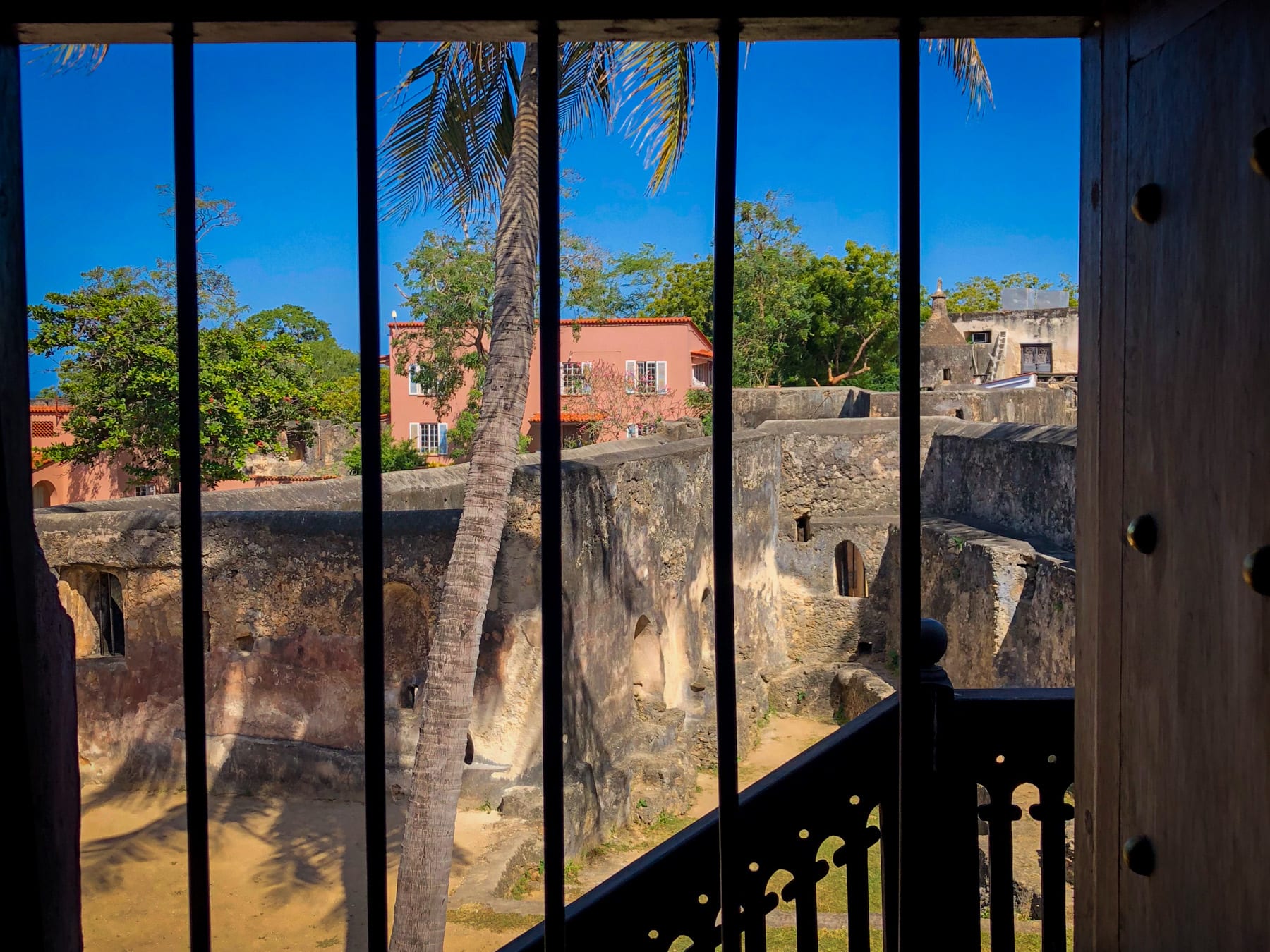Updated 21/11/2021
This post is part of a short mini-series of factual articles about Kenya. Last week, I wrote about 14 interesting facts and insights about the country. Now, I want to delve a little deeper into Kenya’s deep and rich history.
Many of the symbolic historical events, battles and conquests centered around the coastal areas. However, the mystical and volcanic Great Rift Valley region also holds many secrets. You will discover why this area is known as the “Cradle of Mankind” and why it is of such archaeological significance.
To start things off, let me first take you back more than 200 million years! We will then fast forward 193 million years to early mankind before travelling through time to the Portuguese and Omani conquests, the colonial period of British East Africa, and finally, the country’s struggle for independence.
With 200 million years of history, there’s a lot to cover! So, we’ll look at some of the notable highlights along the way – I hope you enjoy the journey!
1) Dinosaurs once walked in Kenya over 200 million years ago!
Evidence that dinosaurs once walked across Kenya was unearthed in 2004, when scientists from the University of Utah and the National Museum of Kenya discovered over 200 bone pieces, belonging to multiple species of dinosaurs and giant crocodiles. The fossils were found in Lokitaung Gorge near Lake Turkana; the same general area that is also renowned for the early mankind discoveries.
Within a similar time frame, the super-continent, Pangea had started to break up. Gondwana (what is now Africa, South America, Antarctica, India and Australia) split from Laurasia (Eurasia and North America). Gondwana then during the Jurassic period, some 180 million years ago, when the western half of Gondwana (Africa and South America) separated from the eastern half (Madagascar, India, Australia, and Antarctica).

Continental drift across millennia – from the super-continent Pangea to a more reconisable view of present day continents. Image by tinkivinki, 123rf.com
2) The ‘Cradle of Mankind’
East Africa, especially Northern Kenya, Ethiopia and Tanzania, is often referred to as the Cradle of Mankind, due to some fascinating archaeological discoveries. Signs of early life dating as far back as 6.5 million years have been found, including skulls, bones and various other artifacts to suggest early ape-like species once lived in what is now Kenya.
Notable discoveries in the region over the years have included:
- Richard Leakey’s 1.6 million year old ‘Turkana Boy’ found in 1984 (Kenya)
- Lucy – the 2.8 million year old skull found in 1974(Ethiopia)
- The 3.8 million year old Laetoli footprints found in 1978 (Tanzania)
- The 6.5 million year old Millennium Man, found in Tugen Hills (Kenya) in 2000.
The National Museum in Nairobi is a great place to learn more about the fascinating archaeological history of the region.

Part of the region known as the ‘Cradle of Mankind’, Lake Turkana is a remote area in the northern Rift Valley. Image by Moiz Husein, 123rf.com
3) The first Arabs settle in Mombasa during the 8th century
Up to the 8th century (701 AD – 800 AD), various nations had visited Kenya but the Arabs were the first to settle. Through their mixing with the local Bantu tribes, the Swahili culture began to develop and by the 15th Century, had become well established across coastal towns in Kenya and Tanzania. This new culture featured its own language, customs, lifestyle and devotion to Islam. Today, the Swahili culture flourishes along the coast and boasts some of the best food in Africa (that’s in my opinion!), having been heavily influenced through the Arabian and Persian roots.
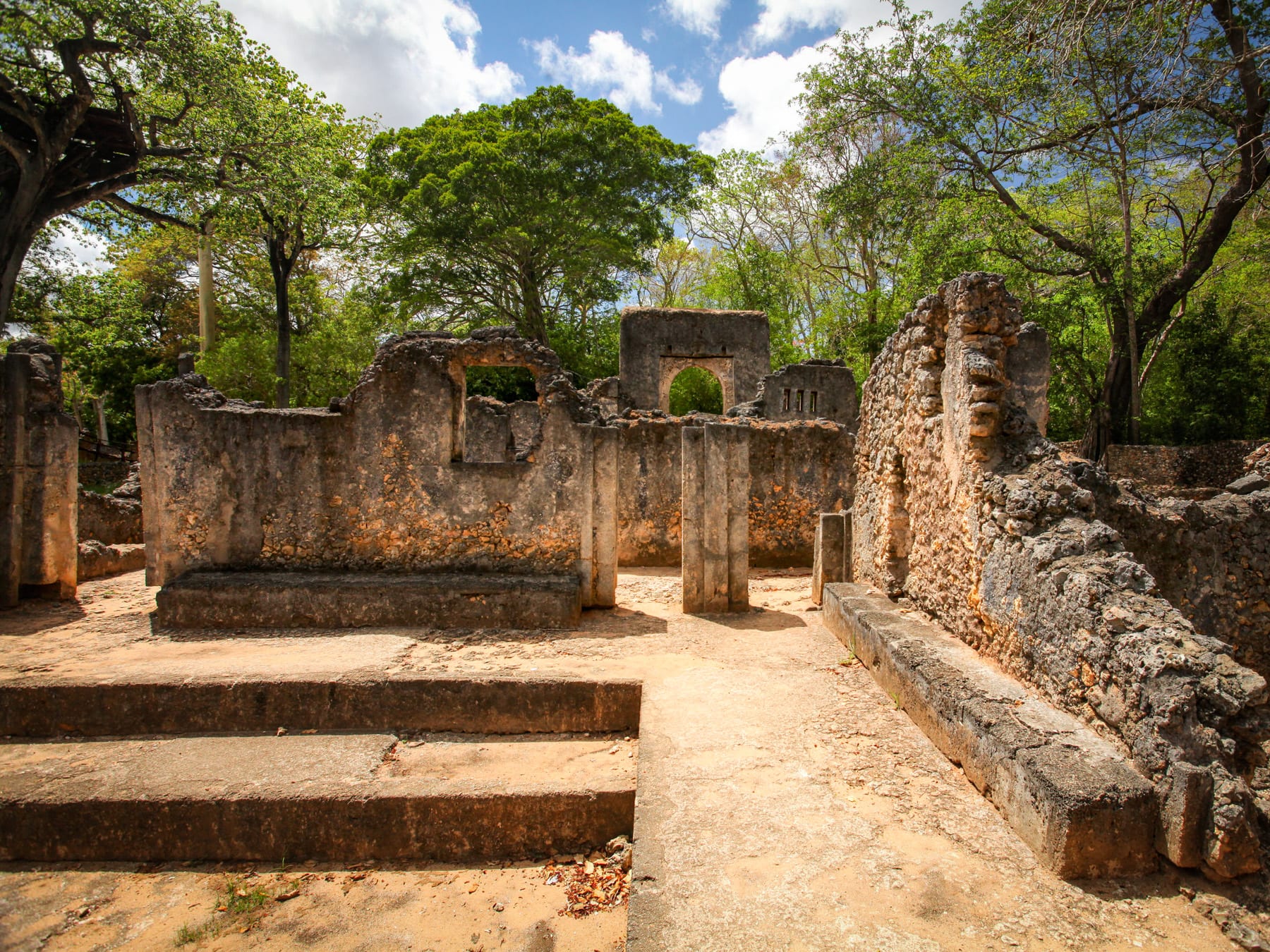
Gede is the remains of a twelfth century Swahili town, north of Mombasa. Image by Luboslav Ivanko, 123rf.com
4) Portuguese conquest
The Arabs dominated the coastal region until the Portuguese arrived and began to challenge them. From 1498 to 1510, almost all cities on the Swahili coastline had been taken by the Portuguese. Malindi became the first northern headquarters of the Portuguese in 1512, but was later moved to Mombasa in 1593. Fort Jesus was constructed in the Old Town between 1593 and 1596, with the aim of protecting the Port of Mombasa and to strengthen their hold over the coast.
We visited Fort Jesus in 2018 and would thoroughly recommend it as a place to learn all about the history and coastal conflicts endured by the country. I took the picture below, showing wall paintings by the Portuguese, who continued to rule the coastline for over one century, despite attempts by the Arabs to regain control.
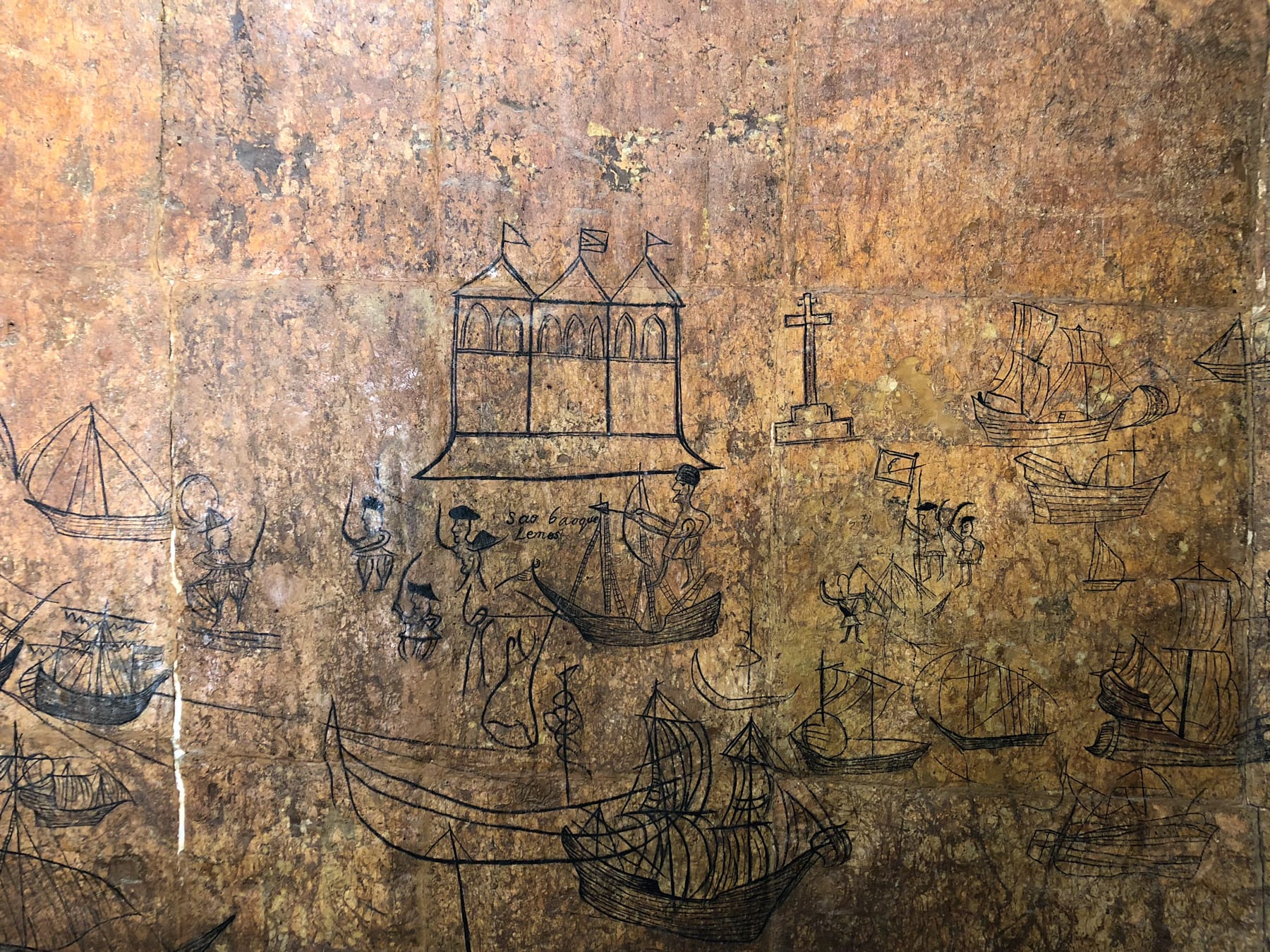
Portuguese wall paintings at Fort Jesus, Mombasa. Image copyright Ayaan Chitty.
5) The Omanis ruled for almost two centuries
In 1698, after a 33 month siege of Fort Jesus, Mombasa and the coastal region was claimed by the Arabs and came under Omani rule. The Portuguese had virtually all disappeared from the coastline, north of Mozambique during the early 1700s and the Omanis continued to dominate for almost two centuries.
During Saʿīd ibn Sulṭān’s rule of East Africa (1806 – 1856), Zanzibar became very heart of the Omani Empire, after moving the capital of the Sultanate from Muscat to the island.

Saʿīd ibn Sulṭān ruled the Omani Empire in East Africa from 1806 – 1856. Image by: unknown.
6) The East African slave trade
Under Omani rule, the slave trade flourished, until a series of events starting in 1822. Great Britain outlawed slavery throughout its empire in 1833, resulting in the British Navy also opposing slave trade operations across the Atlantic. Although North America had made it illegal to sell slaves in 1808, frequent circumvention occurred until the American Civil War in 1861, when the Northern Blockade cut off the routes. The trade eventually became outlawed in East Africa in 1873 but reportedly continued into the early 1900s.

The brutal and inhumane East African slave trade flourished under Omani rule. Image by: unknown.
7) Europe gained a foothold in East Africa from 1840
In 1840, The British established a consulate at the Sultan’s Court in Zanzibar, in order to monitor the Moresby Treaty of 1822, which made it illegal to sell slaves to Christian countries. This event marked the beginning of European interest in East Africa. Shortly after, many missionaries began arriving and the interior of Kenya was first properly explored and charted.
In 1846, Johann Ludwig Krapf and Johannes Rebmann were the first Europeans to venture into the interior of Kenya. Rebmann was the first white man to see Kilimanjaro and Krapf to see Mount Kenya, in 1848 and 1849 respectively. British explorers, such as Livingstone, Henry Morton Stanley and Richard Burton also began discovering a wealth of potential. Joseph Thompson, a Scottish geologist from the British Geographical Society, charted most of Kenya as we now know it.

Joseph Thompson, a Scottish geologist from the British Geographical Society, charted most of Kenya as we now know it. Image by: unknown.
8) The scramble for Africa
It was the discoveries by the early European explorations of the interior lands, that sparked significant interest from Europe. Africa appeared to be rich in natural resources and was an opportunity for the picking. By 1884, following the Berlin Conference, almost all African nations had been ‘claimed’ by European powers, tempted by Africa’s natural wealth and resources. This reflects a pivotal point in history that is commonly referred to as the ‘Scramble for Africa’.
It sounds very crude these days but Africa was literally carved up for the European nations. France had claimed most of West Africa, Belgium inherited the Congo region, Portugal went to Mozambique, leaving Britain and Germany to the Southern and Eastern territories. Britain lay claim to Kenya and Uganda (as well as Zanzibar, through a deal with the Germans).

The conference of Berlin, as illustrated in ‘Illustrierte Zeitung’, 1884.
9) Imperial British East African Company was established in 1887
In 1887, Britain had established the Imperial British East African Association (later, Company) in Mombasa. The company administered the new Protectorate, producing treaty documents and a new currency, which incorporated a seal of the British Crown. In 1895, The British East Africa Protectorate was proclaimed, with Sir. Arthur Hardinge as the first commissioner. New roads and tracks were developed to access the interior, including a long (300+ miles) dirt road to what is now the capital city – Nairobi.

A plaque at Fort Jesus, depicting the name of the British East African Protectorate. Image copyright Ayaan Chitty.
10) The capital was moved from Mombasa to Nairobi in 1905
In 1896, work started on the infamous Mombasa to Kampala railway line (also known as the ‘Lunatic Line’). The development claimed many thousands of lives, primarily Indian workers, that were brought to work on the line. This was due to the treacherous conditions, ‘sleeping sickness’ caused by tsetse flies and wildlife conflicts, such as the notorious ‘man eaters of Tsavo’, inspiring the 1996 film ‘The Ghost and the Darkness.‘ Despite the challenges, in 1899, the railway had reached the base of the central highlands. In the area now known as Nairobi, a camp was established, in preparation for the further challenges that lay ahead in the Rift Valley. By 1905, the capital of the British East Africa Protectorate had been moved from Mombasa to Nairobi.
The forgotten railway workers who braved treacherous conditions to construct the Mombasa – Kampala railway line. Video by K24.
11) Kenya became a Crown colony in 1920.
White settlers began arriving in Kenya from around 1903, after people were invited to settle in Kenya from all corners of the British Empire. Lord Delamare was one of the first to acquire vast amounts of land and by 1912, the white population was around 3,000. Kenya was declared a Crown colony in 1920 and it remained under British rule until 1963, when independence was declared.
The movie Out of Africa, produced in 1985, tells the story of Baroness Karen Blixen, a Danish aristocrat, who lived in Kenya between 1914 and 1931. Whilst the story is just one perspective, the scenes in the movies give an idea of what life may have been like.
Out of Africa, produced in 1985, tells the story of Baroness Karen Blixen, a Danish aristocrat, who lived in Kenya between 1914 and 1931.
12) Land was taken by the British and tribes were displaced
During colonial rule, the British has declared all land to be Crown land, significantly weakening the rights of native Africans (to whom the land originally belonged). In many cases, land was literally taken without compensation and sadly many tribal communities were displaced.
In 1934, the 30,000 white settlers – around 0.25% of the population—controlled one third of all arable land in the country. In 1941, a series of forceful evictions and repatriations occurred, affecting many Kikuyu, Maasai, Kalenjin and other tribes. From the 1920’s onward, various political groups were being formed, spurred largely by the return of the land that had been taken.
13) Queen Elizabeth II became Queen while in Kenya
During a visit to Kenya, Queen Elizabeth II’s father (George VI) passed away, on 6th February, 1952. She was staying at Treetops hotel in the heart of the Aberdare forest when he died. Jim Corbett, a British hunter famously wrote in the visitors log book: “For the first time in the history of the world, a young girl climbed into a tree one day a Princess and after having what she described as her most thrilling experience, she climbed down from the tree the next day a Queen.” However, it was not until the following day, at Sagana Lodge, near Mount Kenya, she learned of his death and her immediate accession to the Throne, becoming the first Sovereign in over 200 years to accede while abroad. Sadly, due to the after effects of the COVID-19 pandemic, Kenya’s oldest safari lodge was forced to shut down after almost 90 years.
Mombasa’s landmark tusks, situated on Moi Avenue, were originally constructed to commemorate Queen Elizabeth’s visit to Mombasa. Originally built from wood and meant as a temporary decoration, they have become a popular attraction. They were later made permanent and recast in aluminum, to withstand the weather conditions. During this modification, the tusks were assembled across two lanes (of which was originally a one-lane road), co-incidentally forming the letter ‘M’ for Mombasa.

My wife and I visited Treetops, set in the heart of the Aberdare National Park in 2016. Image copyright Ayaan Chitty.
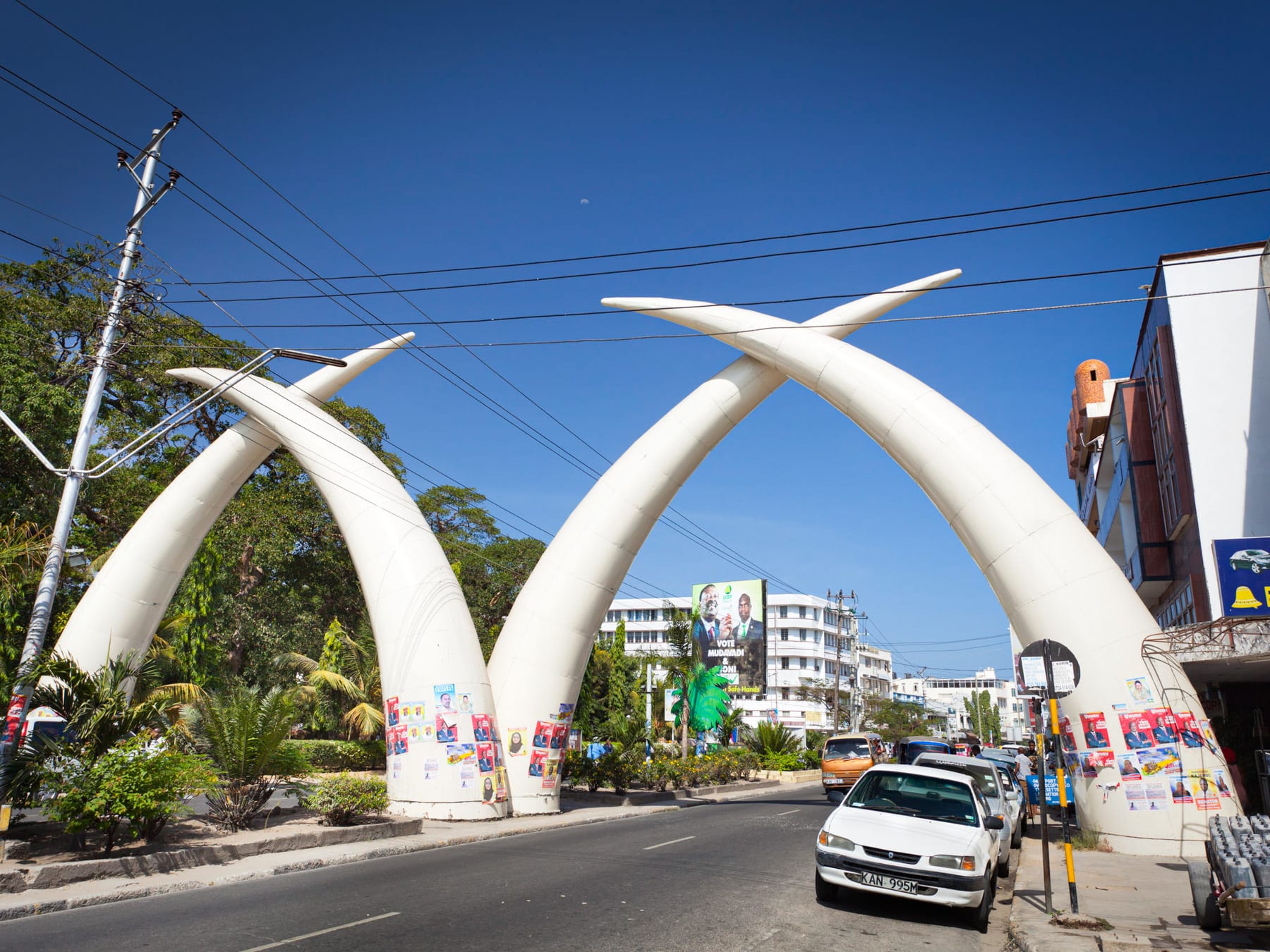
The famous tusks situated on Moi Avenue were originally constructed to commemorate Queen Elizabeth’s visit to Mombasa. Image by industryandtravel, 123rf.com
14) The road to independence was a long struggle
A number of political formations and organised resistance took place between the 1920’s and 1940’s, including the campaigning by Jomo Kenyatta (secretary of the Kikuyu Central Association). His campaigns included a visit to London, where he remained in exile between 1931 and 1946. After world war II and India’s independence in 1947, hope was sparked across the empire. However, with the political channels proving slow and uneventful, many people became impatient, doubting that independence could be achieved through peaceful means.
From 1947, a number of groups, who were prepared to fight and die for their rights, came together under the unified Mau Mau assembly. The fight for freedom saw many white settlers attacked by the Mau Mau, Jomo Kenyatta arrested for allegedly inciting the rebellion and by 1954, over 77,000 Kikuyu placed in concentration camps. The British sent in over 20,000 troops, in attempts to control this new state of emergency. In addition to force, they leveraged intelligence and political incentives to encourage many to stop the fighting. Such incentives included permitting Africans to grow coffee for the first time and allocating more land.
For those in interested literary arts, Ngugi wa Thiong’o, a well known Kenyan author, captures the essence of colonialism and the struggle for independence.
However, despite the victory over Mau Mau, the British were aware that the colony was becoming unstable. After the election of a black majority government in 1957 and following his release from prison in 1961, Kenyatta came to London to initiate the pathway to full independence. Kenya became independent on 12th December 1963 with Kenyatta as the first Prime Minister. A year later, under a constitutional amendment, he became the first President of the Republic of Kenya.

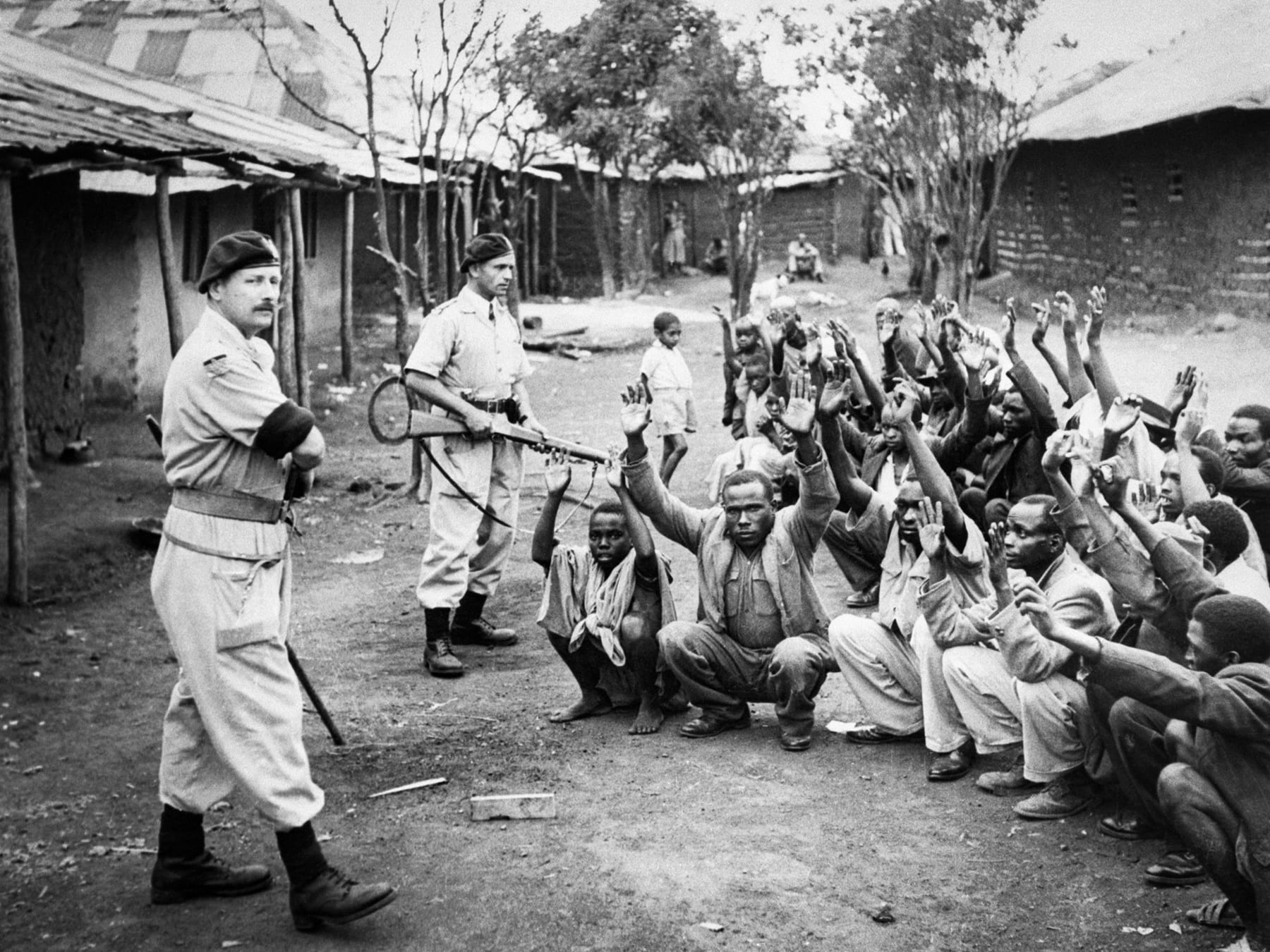
Suspects of the Mau Mau rebellion were rounded up and placed in concentration camps. Images by Getty Images.
15) 2023 will be a landmark 60 year anniversary of independence
Following Kenya’s second and third Presidents Moi (1978 -2002) and Kibaki (2002 – 2013), Uhuru Kenyatta (son of Jomo Kenyatta) became the fourth President of Kenya in 2013. Kenya celebrated 50 years of independence in 2013 and 2023 will be a landmark 60 year anniversary. In 2017, Uhuru Kenyatta was voted in for a second five-year term.
Reflecting on the decades since independence, the country has had many ups and downs. On the one hand, the nation has attracted negative attention for authoritarianism, terrorism, corruption and political instability. On the other hand, Kenya has fared well; it has risen to be one of Africa’s top emerging markets, a thriving trade and investment centre, preferred regional business hub and award winning tourism destination.

Jomo Kenyatta, the appointed Prime Minister at Kenya’s independence on 12th December 1963. Image by Getty Images.

H.E. Uhuru Kenyatta delivering his speech as Kenya celebrated 50 years of independence on December. 12, 2013. Image by Khalil Senosi, AP Photo.

Traditional dancers sing and dance at the Kasarani stadium in Nairobi for the 50 years of independence celebrations. Image by Getty Images.
In Summary
For me, Kenya’s history is fascinating and there’s so much to learn. With such a rich and deep history, it’s obviously impossible to even scratch the surface in this blog post but I hope it’s give you a flavour of what has happened through the years.
If you get chance to visit Kenya, I recommend visiting the National Museum in Nairobi to learn more about the country’s history. Fort Jesus is also well worth a visit if you are visiting Mombasa.
In the meantime, why not take a look at the other posts in this 4-part mini-series:
Please do let me know your feedback or questions via the comments box below (note: you may need to scroll right to the bottom of the page). I would be very happy to hear from you and will do my best to address any questions you have.
We are also publishing new content regularly, so don’t miss out – you can subscribe using the form below and get notified each time new content is added.
Did you enjoy reading this post?
Why not share it with your friends?
Never miss an update from us!
Sign-up below and we’ll keep you updated of new posts and information about Africa.


